Osmoregulation in Plants-Mechanism, Methods, And Examples
Osmoregulation in Plants Definition
Plants maintain water potential gradients between their cells and the external environment to regulate water uptake, transport, and loss. This process of maintaining water balance is called osmoregulation.
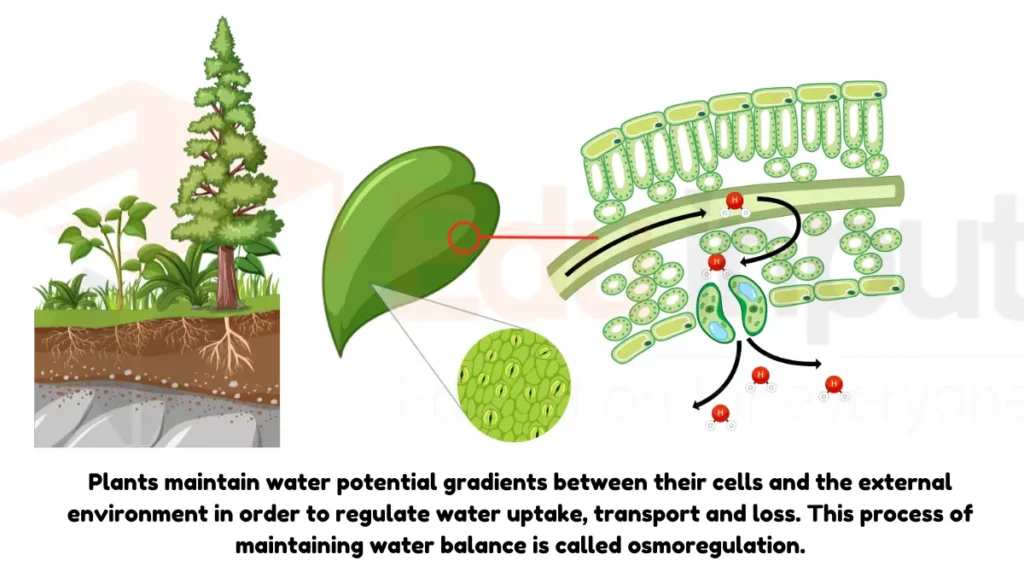
Mechanism of Osmoregulation in Plants
Here is the mechanism of osmoregulation in plants:
- Root cells absorb water from the soil by osmosis. Osmosis moves water from high water areas to low water areas. Aquaporins are protein channels that help water enter root cells.
- As water enters root cells, the water potential inside cells becomes lower than outside cells. This pulls more water up into the plant.
- Special cells called guard cells control openings on leaves called stomata.
- Opening and closing stomata regulate water loss by evapotranspiration.
- When guard cells fill with water, stomata open. This allows gas exchange and water vapor release. When guard cells lose water, stomata close to prevent excess water loss.
- Plants also adjust the number of sugars and ions like potassium inside cells. This balances concentrations between cells. It makes water move in or out of cells by osmosis.
- Plants can also change how fast they use up water, grow, or metabolize. This depends on available water to maintain balance.
Methods Of Osmoregulation in Plants
Here are the key methods plants uses for osmoregulation to manage water and solute balance within their cells:
1. Cell Wall and Turgor Pressure
The rigid cell wall surrounding plant cells helps maintain turgor pressure. As water enters the cell, it presses against the cell wall, creating turgor pressure. This pressure is important for maintaining cell shape and supporting the plant’s structure.
2. Vacuole Regulation
The central vacuole in plant cells plays important role in osmoregulation. By actively pumping ions into the vacuole, plants can control its osmotic potential. This, in turn, affects water movement into or out of the cell.
3. Selective Permeability
Plant cell membranes, like all cell membranes, are selectively permeable. This means they allow certain substances to pass through while restricting others. Plants can regulate osmotic balance by controlling the movement of ions and other solutes across their cell membranes.
4. Accumulation of Solutes
Plants may accumulate solutes such as sugars, amino acids, and ions in their cells. This creates an osmotic gradient that promotes water movement. In times of water scarcity, some plants may accumulate compatible solutes to maintain cellular hydration.
5. Root Architecture
The root system of a plant is also involved in osmoregulation. Plants can adjust the distribution and density of their roots in response to soil conditions. This helps them optimize water uptake and cope with varying levels of water availability.
6. Stomatal Regulation
Stomata, small pores on the surface of leaves, are involved in gas exchange and water regulation. Plants can open or close stomata to regulate water loss through transpiration, thereby influencing water balance within the plant.
7. Crassulacean Acid Metabolism (CAM)
Some plants, especially those in arid environments, use CAM photosynthesis. They open stomata at night to reduce water loss and fix carbon dioxide. This adaptation allows them to conserve water while still meeting their photosynthetic needs.
8. Root Hairs
Root hairs increase the surface area for water absorption by the roots. This adaptation enhances the plant’s ability to extract water from the soil.
Division Of Plants Based On Osmoregulation Process
Plants are categorized into three groups based on their osmoregulation processes, determined by their habitat nature:
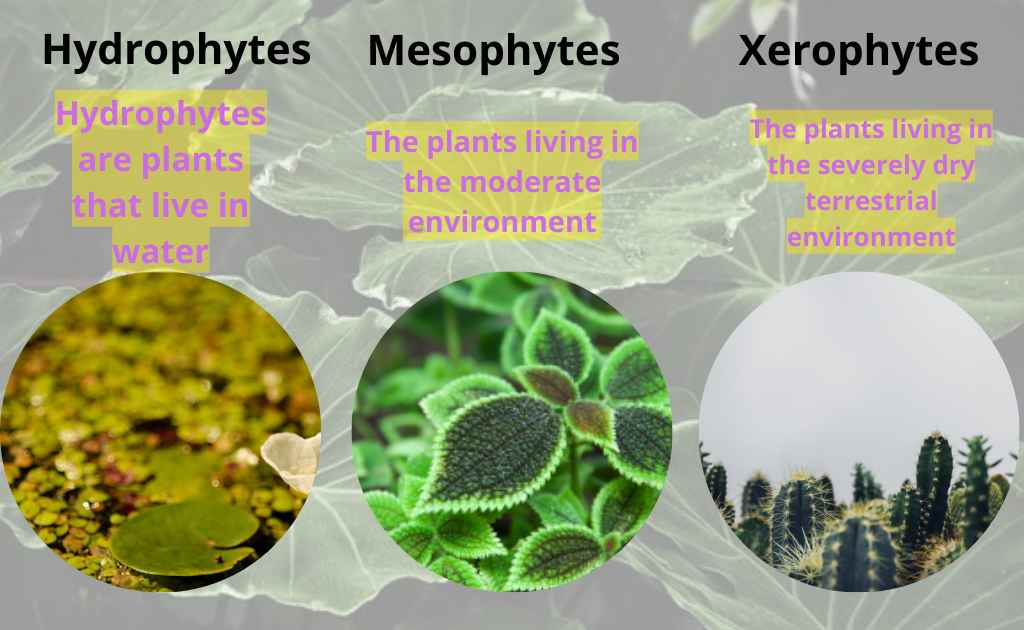
1. Hydrophytes (Aquatic Plants)
Hydrophytes are plants that live in water. They are also called aquatics or aquatic plants.
- Examples: Water lilies, duckweeds, cattails.
- Habitat: Ponds, lakes, rivers, wetlands.
- Osmoregulation Adaptations: Large surface area for excessive transpiration; abundant stomata on the upper surface to promote water loss.
2. Mesophytes
The plants living in the moderate environment are called mesophytes. These plants have moderate water availability.

- Examples: Brassica, roses, mango.
- Habitat: Moderate environments with moderate water availability.
- Osmoregulation Adaptations: Stomata open in sufficient water, promoting water loss; stomata close in limited water to prevent excessive water loss.
3. Xerophytes
The plants living in the severely dry terrestrial environment are called xerophytes.
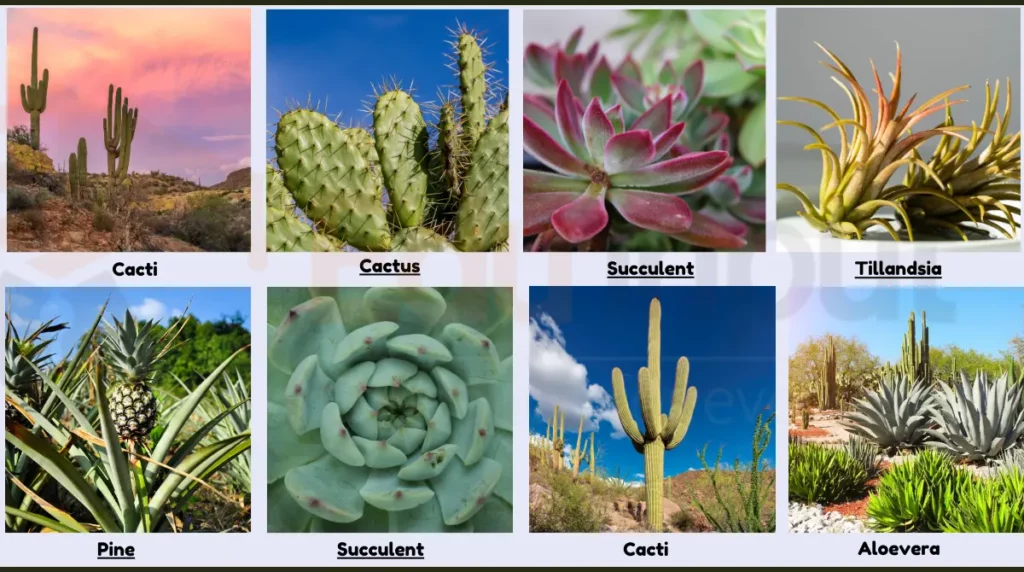
- Examples: Cacti.
- Habitat: Severely dry terrestrial environments.
- Osmoregulation Adaptations:
- Small, thick leaves to reduce surface area and water loss.
- Thick, waxy, and leathery cuticles for water retention.
- Stomata located on the lower leaf surface.
- Some shed leaves in dry seasons to reduce transpiration.
- Stems act as water-storing organs, utilizing stored water during dry periods.
How Plants Osmoregulate In Freshwater?
In freshwater environments, plants regulate osmotic balance by actively absorbing water through their roots, selectively taking up ions, pumping ions into vacuoles, maintaining cell wall integrity for turgor pressure, and adjusting stomatal openings to balance water uptake and transpiration.
These adaptations ensure optimal growth and function in environments with ample water availability.
Frequently Asked Questions-FAQs
How does osmoregulation occur in plants?
Plants use vacuoles as their osmoregulatory organ. Turgor pressure in leaves also helps to maintain osmotic pressure, which facilitates osmoregulatory functioning.
How do plants maintain the balance of water and salt?
Osmoregulation is the process that help plants maintain the salt and water balance.
How many types of plants are there on the bases of the process of osmoregulation?
There are three divisions of plants based on the way they osmoregulate according to their habitual conditions;
Hydrophytes
Mesophytes
Xerophytes

 written by
written by 
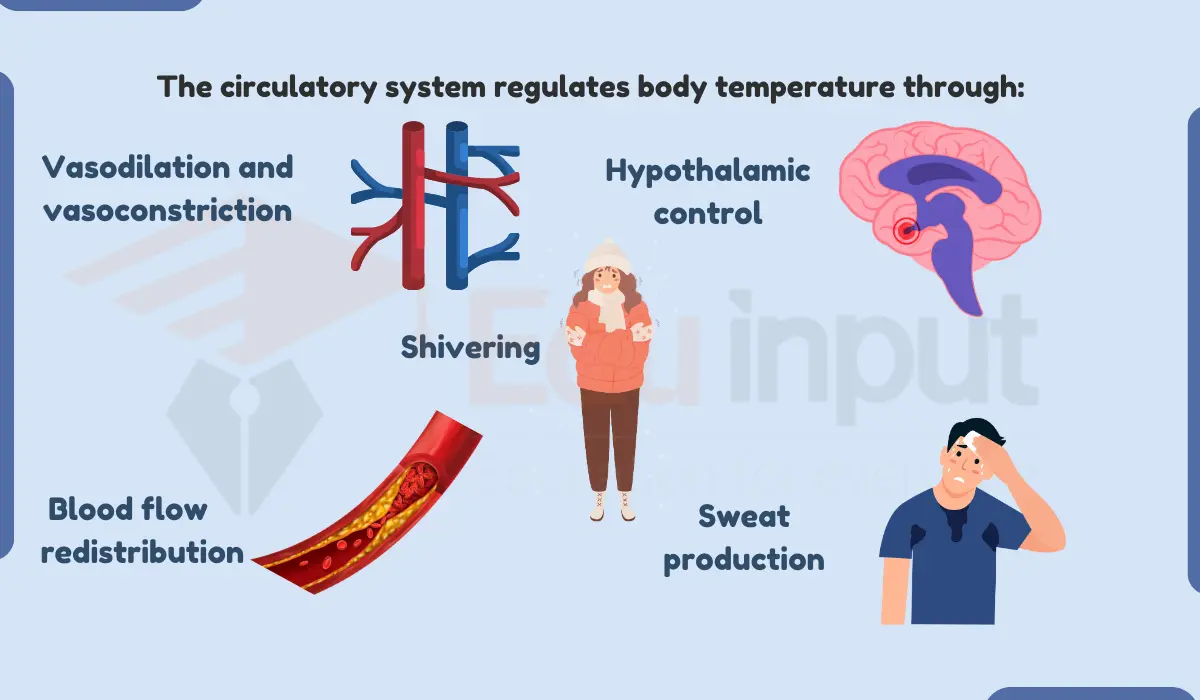
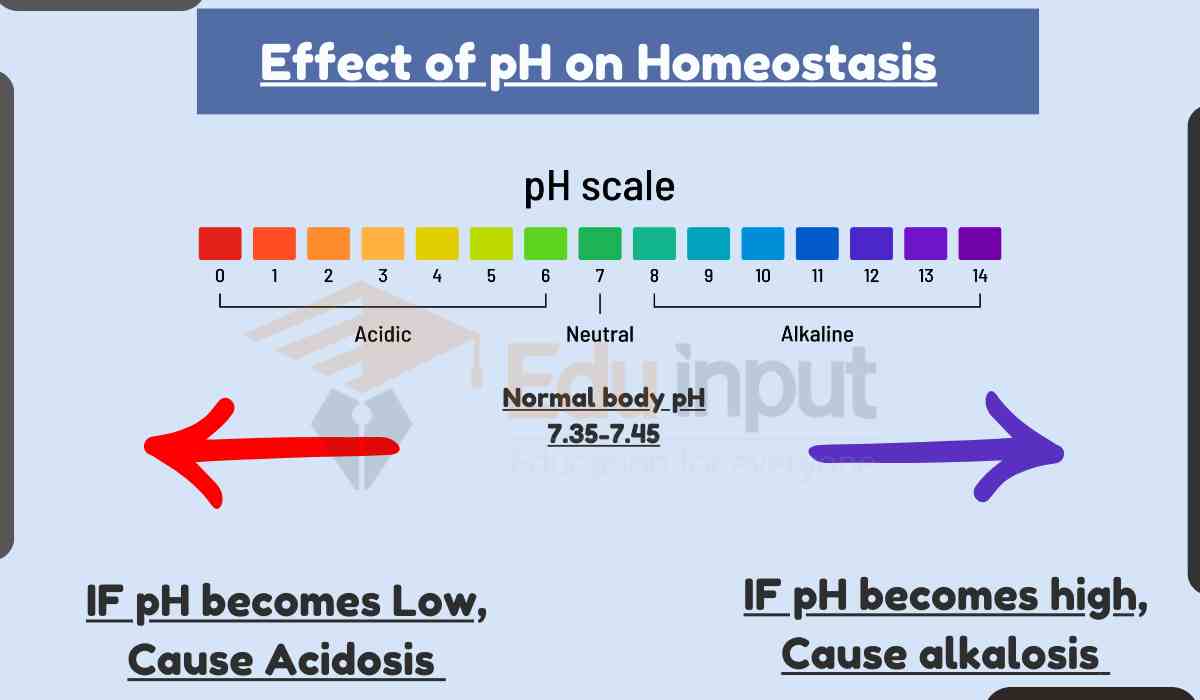


Leave a Reply